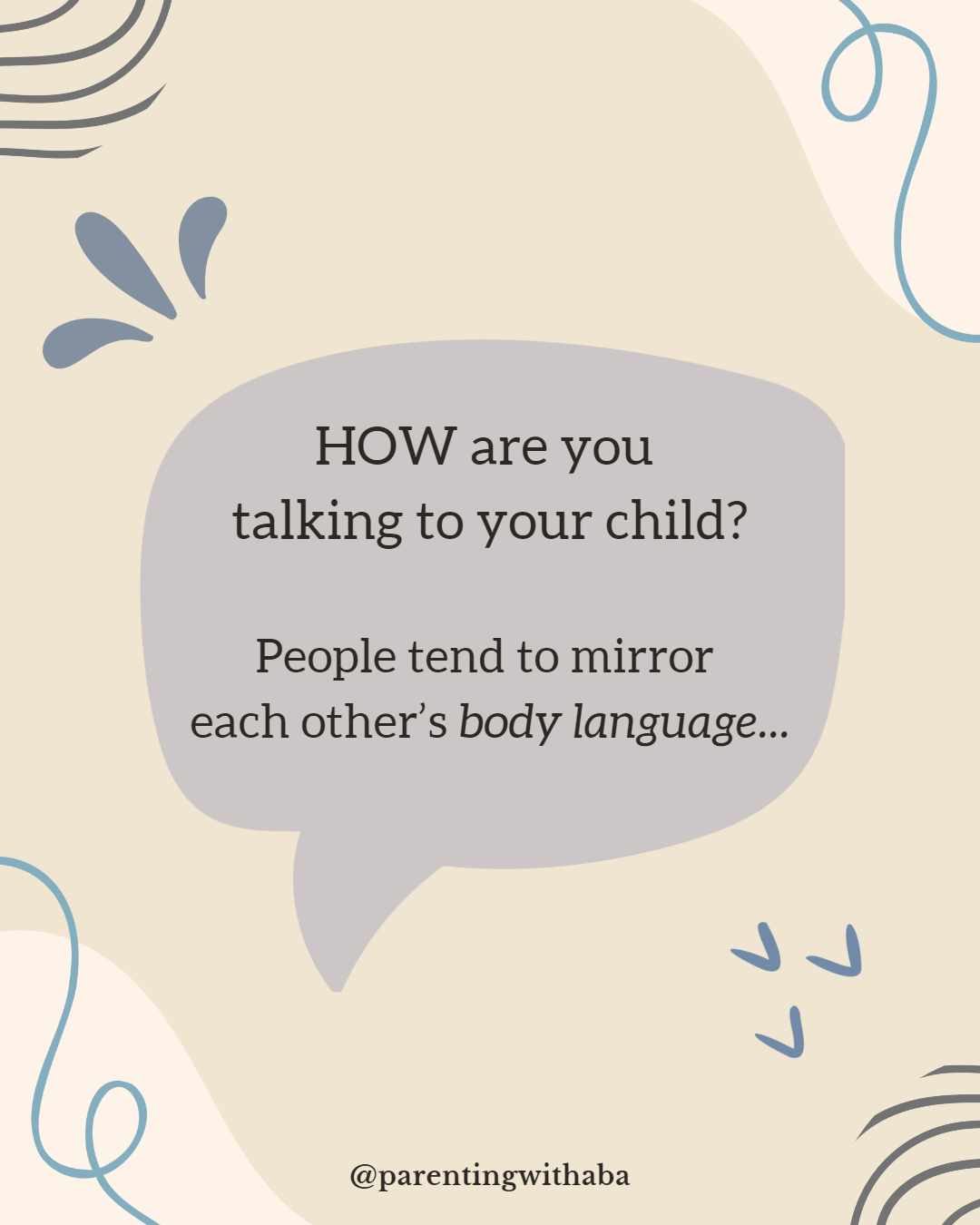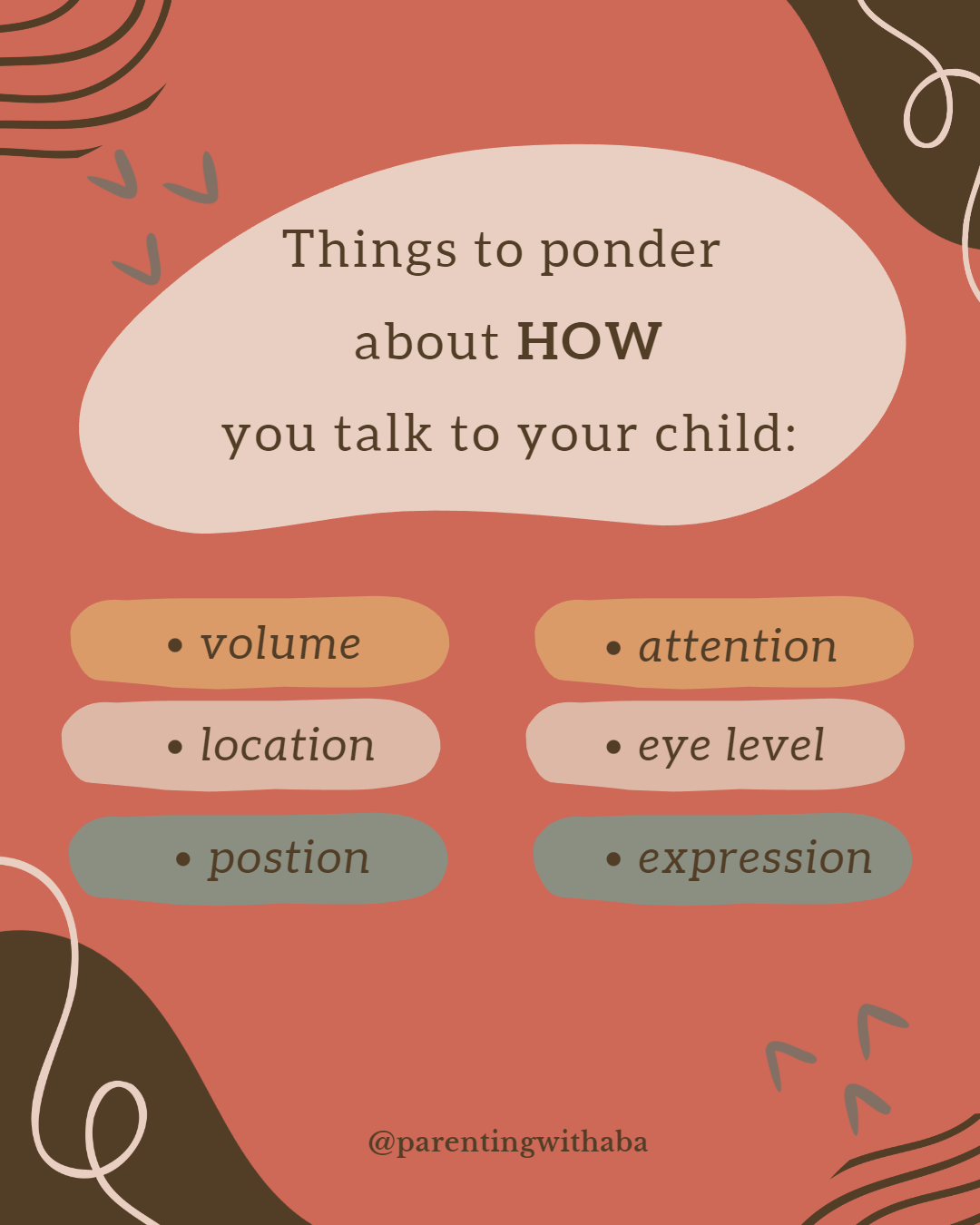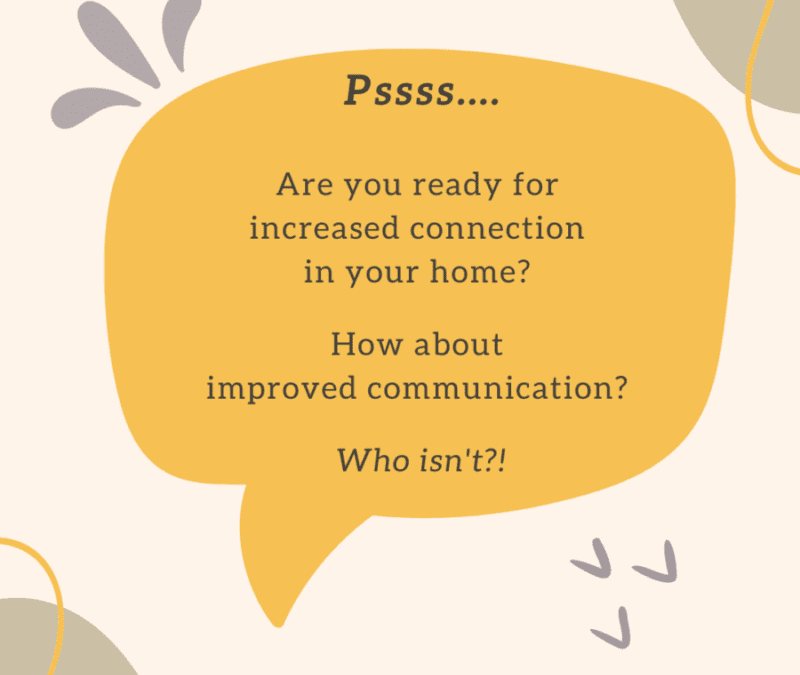When you are talking to your children, are you aware of what your body language is saying to them?
This makes me think of Ursula in The Little Mermaid. Can you hear her voice? “Body language- HA!”
Anywhoo, we see posts or hear advice all the time about WHAT to say to our kids. Say this, not that. Use process praise, not outcome praise. Praise their effort, not their achievement. Compliment their looks, don’t compliment their looks. Tell them what to do, don’t tell them stop all the time. Say this, not that. And on and on and on…

I want you to pause for just a second and think instead about HOW you are talking to your kids…
Does it look like these?
- Distracted, looking at your phone, multitasking while doing chores, cooking, etc.
- Shouting, either to get their attention or just talking from another room
- Yelling, out of anger or frustration
- Long lectures where you drone on longer than anyone really wants you to
- Short tiny blips of conversation between activities in an overpacked schedule
- Some other less than awesome form of communication
HOW are you talking to your child?
People tend to mirror each other’s body language. It’s not something we do on purpose- but we often automatically copy what our conversation partner is doing. Try it out. When talking to your partner or a friend, cross your arms and see what happens. Play with your hair, rub your nose, smile, grimace- experiment and test out this statement- people tend to mirror each other.
Now that you believe me, think for a minute about how your child’s body language looks when they are talking to you. What do you want to teach them about being a good listener or a respectful conversationalist? Do you want them to be distracted, lecturing, shouting, or some other format that you are accidentally modeling?
I’m guessing your answer to that is NO!

Things to ponder about HOW you talk to your child:
- Voice volume. Do you want your child to shout at you from other rooms or when they are angry? If not- maybe think about what you are modeling when it comes to volume.
- Your location. Are you far away- several feet, or close together.
- Your position. Are you staring into their eyes like a detective across a table in an old TV show? Try sitting side by side to take some of that pressure off.
- Your attention. Are you distracted and multi-tasking? How you can you prioritize your time so you can put the phone down or walk away from a chore for just a minute to give your undivided attention to your child. And no- please don’t think I’m saying give your undivided attention every single moment of every single day. But you can pause for 60 seconds at a time, put your phone down and pay attention to what your child is saying or speak directly to them without distraction. Tiny bursts of undivided attention is the goal here- not pressure to do this all the darn time.
- Eye level. Are you towering over your child simply because you’re taller than them? How can you get to their level to even the playing field and take some of the accidental intimidation out of the situation? If squatting down or kneeling sounds painful to your knees like my old lady knees, sit in a chair or on a comfy sofa. Again- this is not an all or nothing thing. You don’t ALWAYS have to sit down to talk to your child. But if you can find ways to do this more often- you’ll likely find that they are listening better to you and you are able to feel more connected to them. Win-win.
- Your face. What is your face saying that your words are not? Do you have RBF? Resting B___ Face? Can you smile at your child when you are talking to them? Have an open and ready facial expression instead of pained and stressed?
All of these are GREAT goals to work toward. They are not the expectation for every single interaction with your child. Please don’t put that pressure on yourself to try to be perfect. What we CAN do however, is think about these and try every day to do at least one a little more often.
So pick one or two body language HOWs from the list above. Be intentional about doing it a time or three a day. Then let me know how it goes! Do you see the difference already? When you do, it’ll be even easier to do these HOWs more often and they’ll become your automatic method of communicating in your home.
Connection increase- check! Communication improved- check! You got this!
Remember: You can set up a free brainstorming session at the link here: https://www.parentingwithaba.org/coaching/

Recent Comments